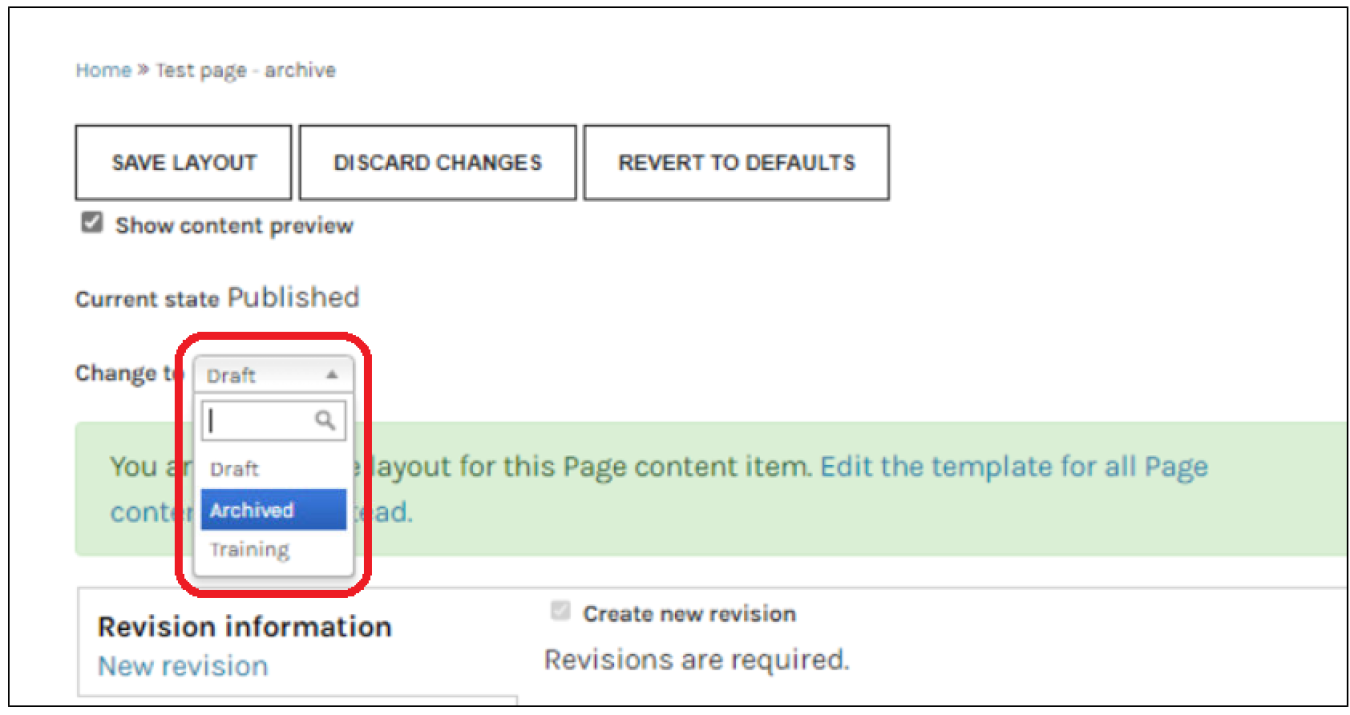The Content Clean-up Initiative seeks to give Offices greater autonomy over their content.
August 22, 2022Content Governance seeks to remove outdated content from the site and to give Offices greater autonomy over their content.

Content Governance Workflow
The Content Governance Workflow is to be implemented as part of the Content Clean-Up Initiative. The ultimate objective of this initiative is to automate the cleanup of outdated webpages and to empower Offices to modernize their content.
- Automated workflows will govern the lifecycle of content based on tags and expiration dates assigned by Offices directly on their nodes.
- Please Note: This workflow will govern all content within the CMS with the exception of Homepages.
- Throughout this process, the system will send automated email notifications informing Offices of the actions they need to take to keep their content relevant
- Some workflows will prompt Offices to update older content, while others may automatically archive outdated materials. This will be determined by the Tag assigned to the content (see 'Content Governance Status' section below).

Content Governance Status
The Content Governance Status of a node will be determined by the Content Governance Tag. These tags provide a standardized way for Offices to identify the lifespan of their content. Tags will be assigned individuals with Editor/Publisher permissions. You will only be able to assign a Content Governance Status to nodes within your office. This status will also be used by the system to run automated processes that will unpublish and remove outdated content.
Content Governance Tags may be assigned under the Moderation State configuration when looking at a Node in Layout Builder. The tagging options are as follows:
- Temporary: Content is temporary and does not need to remain on the site indefinitely. If no action is taken, content will be unpublished at the time of expiration.
- Content will have an expiration date that may be set when you create or edit a node. The default expiration date for Temporary content will be 3 years.
- Example: News or Blog Article
- Evergreen with Periodic Updates Required: Should be preserved on the site, needs regular maintenance.
- Content will have an expiration date that may be set when you create or edit the node. Note: This content type will not be unpublished at the time of expiration.
- Example: Leadership Page
- Statutorily Required: Content should be preserved on the site for legal or policy reasons. Content should be updated regularly to maintain relevance. If no action is taken, content will be unpublished at the time of expiration.
- Content will have an expiration date that may be set when you create or edit a node.
- Example: Expiring Contracts or Budget
- Purge: Content is flagged for removal and automatically archived.
- Example: Test Node
The Content Governance Status and Expiration Date of a node may be updated at any time by an User with the appropriate permissions and group assignments. Changing the Status or Expiration Date will update the workflow for the content.

Coming Soon!
There is a ticket in the backlog to expand permissions to include Reviewers.
Stay tuned for additional updates!
Content Governance Report
The Content Governance Report is now accessible in the CMS to help you keep track of how your content is tagged and when it is set to expire.
This report looks similar to the view found at cms.doe.gov/admin/content, but will include additional columns and filters specific to Content Governance, such as Expiration Date.
This report, which may be downloaded as a .csv file, is useful for monitoring the status of content to maintain relevance.
The Content Governance Report is currently available to those with Basic Editor and Publisher permissions in the CMS.

Archived Moderation State
Under the Content Governance Workflow, the 'Unpublished' moderation state will become 'Archived.'
Content that is Archived will no longer be available to CMS Users.
Content may become Archived if it has Expired, depending on the Content Governance Tag assigned to the node by the Office. Content tagged as 'Purge' will be automatically Archived.
CMS Users with Publisher permissions may also manually update nodes to the 'Archived' state.
Please note: Nodes that are currently in the 'Unpublished' state will become Archived once the Content Governance Workflow is implemented.

